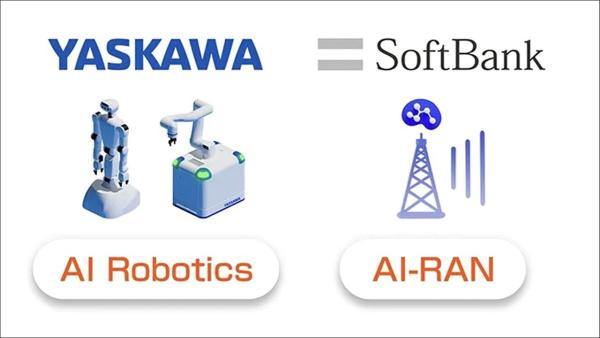Written by Ruth Brown for LightReading.com

As the number of 5G radio deployments continues to grow, operating efficient and optimized networks is more important than ever. Operators have relied on SON technologies for many years to optimize their networks. However, the complexity and scale of 5G are increasing, and thus RAN automation needs to evolve toward more open solutions that build on the existing domain knowledge and techniques. One such solution is the O-RAN Alliance's service management and orchestration (SMO) framework. Within this framework, the RAN intelligent controller (RIC) is pivotal, offering fine-grained control and capabilities via applications (rApps and xApps) to automate RAN processes.
RAN automation success will rely on ensuring the SMO/RIC vendors, operators and third-party app developers create worthwhile enhancements and features by working in symbiosis. Up to now, many solutions have been in development, under lab test or in trials. However, at MWC 2023, several SMO and RIC solutions were on show, demonstrating how the RIC can deliver performance and service experience benefits. Based on my discussions and the demonstrations I saw, here are some observations on RAN automation, specifically the RIC app ecosystem as it matures.
Initial apps and management
RAN automation was a bigger topic than expected this year, with slideware and conceptual ideas making way for real-life demonstrations. Based on these initial solutions, several observations about app availability and management came to mind:
Initial RIC apps: Spectrum management, QoS optimization, geographic location, traffic steering and energy savings are the lead examples of RIC apps. For example, last week in Barcelona, Fujitsu and Juniper demonstrated rApp/xApp energy efficiency use cases. Given the industry's current energy-saving and sustainability focus, these were good choices to showcase. Seeing initial O-RAN use cases reach production was also encouraging.
Artificial intelligence/machine learning (AI/ML) as an enabler: Many RIC and SMO vendor demos highlighted how AI and ML workflows are integral to the RIC (i.e., the execution and performance of RIC apps are enabled and managed by AI/ML). For example, if an app is optimizing cell coverage to enhance performance, an ML model could provide the best parameters for a given site based on neighboring cells. This makes AI/ML vital to automation, increasing what operators can do with the same skilled engineering resources.
RIC app selection: One of the biggest unknowns is the purchasing and operating model for the RIC apps. The ecosystem seems some years away from a common RIC app store model where all RICs offer universal open support to developers. Several models exist for onboarding and managing apps.
The two extremes are: 1) operators select their rApps/xApps from the open market; or 2) the RIC/SMO vendors pre-approve apps for the operator to deploy. Both are viable options, but at Heavy Reading, we think the industry is most likely to adopt a combined approach. Operators certainly do not what to be locked in, but they also appreciate pre-integration and validation. Payment or licensing for using these apps will probably come via several routes initially, too.
The developer ecosystem
Long-term RIC success will be largely dependent on the developer ecosystem. App developers fall into three main categories: RAN/RIC/SMO vendors, service providers and independent software vendors (ISVs; e.g., test vendors, systems integrators, new entrants and traditional SON vendors).
Test vendors have been especially active in app development; for example, Viavi has geolocation rApps and xApps featured on VMware's RIC. Making a platform open, consistent and accessible across all ecosystem developers means careful consideration of the software development kit (SDK), along with the testing and onboarding process for new apps:
SDK: For application developers, ensuring the SDK makes RIC app development easy and secure is essential. This means intuitive developer creation sandpits, thorough test procedures and app optimization environments, which may incorporate digital twin test methodologies. Most RIC vendors (in addition to the O-RAN Alliance) have begun to launch SDKs and developer programs to encourage innovation. It will be important to ensure SDKs do not become a hidden lock-in.
Onboarding of apps: Successful onboarding will require two main processes: app quality checks and security approval. Part of these processes will be guarding against potential app conflicts. Once confirmed, physical system onboarding to the SMO or RIC can occur. The onboarding process and management will probably fall into the SMO/RIC vendor domain initially. Additional governance may be needed to support flexibility and openness across vendors longer term.
Other RAN automation announcements of interest at MWC23 included the following:
- Capgemini RIC and SDK with Viavi location intelligence rApp/xApp
- PI Works RSI rApp on the Capgemini non-RT RIC
- Vodafone, Juniper and Parallel Wireless demonstrated real-time radio resource management in a live O-RAN network (Juniper RIC and Juniper/Parallel Wireless rApps/xApps)
- Spirent highlighted its recent integrated O-RAN test solution, including a RIC tester
- Mavenir shared the recent launch of its O-RIC
- Cohere Technologies demonstrated a MU-MIMO network performance xApp on Mavenir's RIC
- VMware's rAppathon: Including Intel, Airhop, Viavi, HCL software, Net AI, Rimedo, Aira and Aspire
- Ericsson presented its Intelligent Automation Platform (including SMO, non-RT RIC and open rApp environment)
RAN automation through the RIC/SMO is still at the beginning of its journey, with challenges to overcome regarding product maturity, market penetration and the deployment of compatible RAN equipment. However, RIC apps and the developer community are progressing, and in time, they will enable more intelligent RAN operations. It was good to see some real-life examples at MWC23, and I will continue to watch this area as it unfolds.
Click here to read the original article.









